We can all agree that nothing is softer, more gorgeous or smells better than a baby’s skin. But baby skin is also incredibly sensitive.
In fact, recent research from the University of Manchester found that even using something seemingly innocuous, like olive oil for baby massage, on a newborn’s skin can damage the barrier that prevents water loss and blocks out allergens and infections, putting babies at risk of skin conditions like eczema.
Even more surprising? The fact that something as simple as the duration of your baby’s nightly bath could be harming your little one’s skin more than helping. According to Amena Warner of Allergy UK, daily baths should last for a maximum of around 10 minutes.
Eczema affects 15-20% of schoolchildren worldwide, according to BMJ Clinical evidence, meaning skin flare-ups are not uncommon in the first year of your newborn’s life. Here are some of the common baby skin complaints you should have on your radar - and how to help solve them.

Cradle cap
According to the NHS, cradle cap is a skin issue that tends to develop a couple of months after birth. Cradle cap isn’t itchy or uncomfortable for your baby - although that might not be so easy to believe when you see the yellowish and brownish scaly patches covering your beloved baby’s scalp.
Cradle cap may be caused by an overabundance of sebum, so although
doctors don’t know exactly what leads to it, oily skin plays a role. Usually, it clears up on its own, although shampooing frequently (and then brushing afterwards with a softbrush) has been shown to help loosen those flakes.
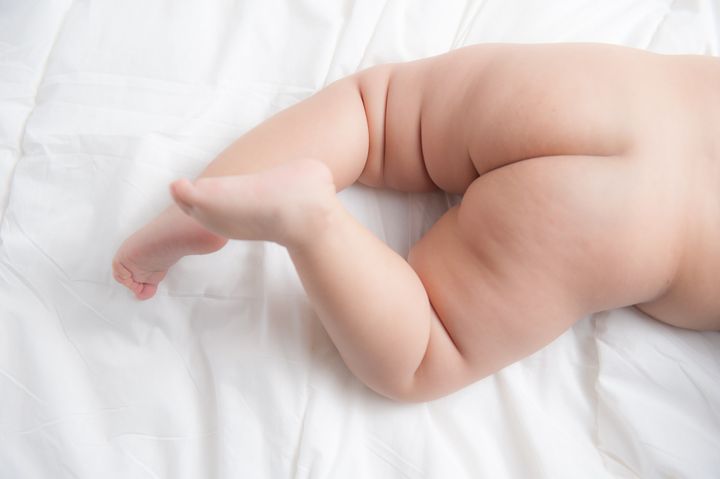
Nappy rash
All of that weeing and pooing in nappies can irritate a baby’s sensitive bottom. If skin is red, sore and angry-looking, you’re probably dealing with a case of nappy rash, a super common condition that your baby is likely to develop at some point in their first two years, according to the NHS. The best treatment is prevention.
You can try to avoid nappy rash by frequently changing your baby’s nappy, ensuring the area is dry before putting a clean nappy on and using a nappy rash cream with zinc to protect sensitive skin from being in contact with wee or poo, according to the Mayo Clinic. Yet another tip for those brave enough to try?
Make it a nappy-free morning (just keep a towel close to hand!)
One thing to watch out for: sometimes it looks and feels like nappy rash, but it isn’t. Red, dry and scaly skin might be a sign of eczema. Or, if skin is bright red with white scaling on it, you may be dealing with a case of thrush, so take the little one in to the GP.
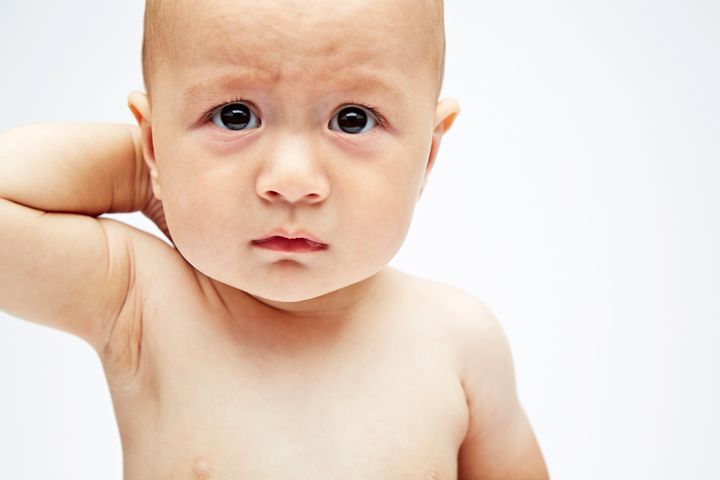
Eczema
Eczema looks like a rash: you’ll see red and inflamed patches of skin, typically in areas like the arms, backs of the knees, ankles, cheeks and the back of the neck, and the main symptom is itchiness, according to the British Skin Foundation.
If your baby scratches the itchy patches, they can get infected and start to bleed. The best way to control eczema, according to the British Association of Dermatologists? In addition to keeping your child’s room cool and identifying any irritants (fabrics, dust mites, chemical sprays, etc.), you should wash and moisturise your baby with fragrance-free emollients each day.
According to NICE guidelines, emollients should be liberally applied all over the body even when there’s no eczema flare-up in sight. It’s also important to apply the emollient correctly: smooth it into your baby’s skin rather than rubbing it (which could aggravate the condition further).
Oilatum has a complete range of emollient therapy, including products suitable for babies and children such as Oilatum Junior Cream for moisturising, and Oilatum Junior Bath Additive for cleansing. These emollients rehydrate dry skin, help to treat eczema (on the whole body, not just visibly affected areas) and can replace conventional moisturisers and bath additives.
The range’s Junior Bath Additive creates a soothing, cleansing, milky bath - and you can follow it with the fragrance-free Oilatum Junior Cream, which contains both liquid paraffin and white soft paraffin, to help keep skin hydrated after washing.
Developed by scientists, Oilatum Junior Cream has been clinically tested to significantly reduce itching for up to 8 hours* - and can help your baby get through the day - and night - without any discomfort.
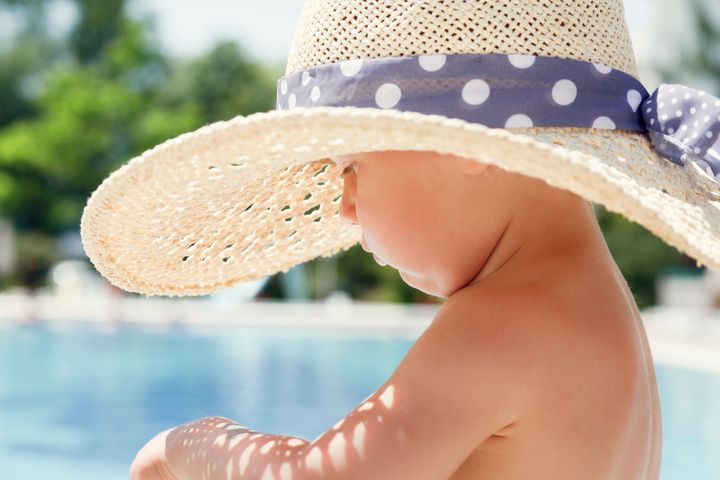
Prickly heat
It’s warm, it’s gorgeous and the sun’s out... but suddenly your baby is covered in small, raised red bumps all over their body (particularly the bits which were hidden by clothing), which can cause an uncomfortable stinging sensation.
Prickly heat, according to the NHS, is a common rash that can develop anywhere on the body, and is usually the result of heat, humidity and sweating more than average (the condition happens when sweat glands get blocked up). Although more typical in warm weather, it can also happen in wintertime too, due to layers of clothing, lots of bedding or sitting close to a heater all day. Happily, this condition usually disappears on its own - just spend time in the shade and keep your baby in loose clothing. If your baby can’t stop scratching, consult your GP.
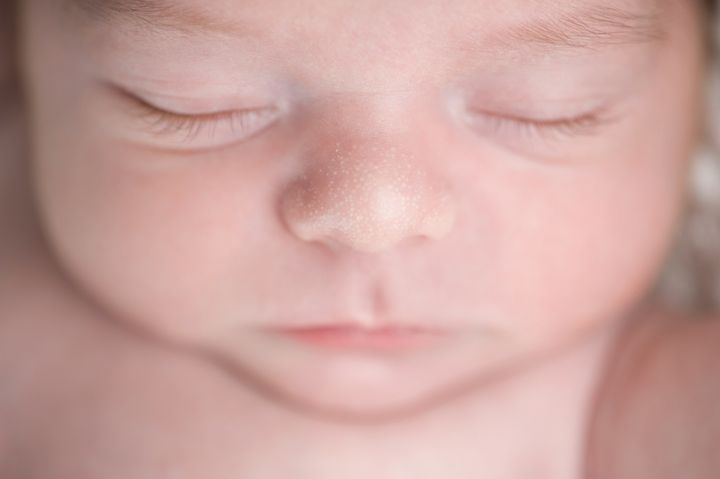
Baby acne and milia
The good news is that both baby acne (tiny pimples on a newborn’s cheeks, nose or forehead) and milia (white spots usually caused by blocked pores) will usually go away on their own after developing in your baby’s first few weeks, according to the Mayo Clinic, though milia may take months to disappear.
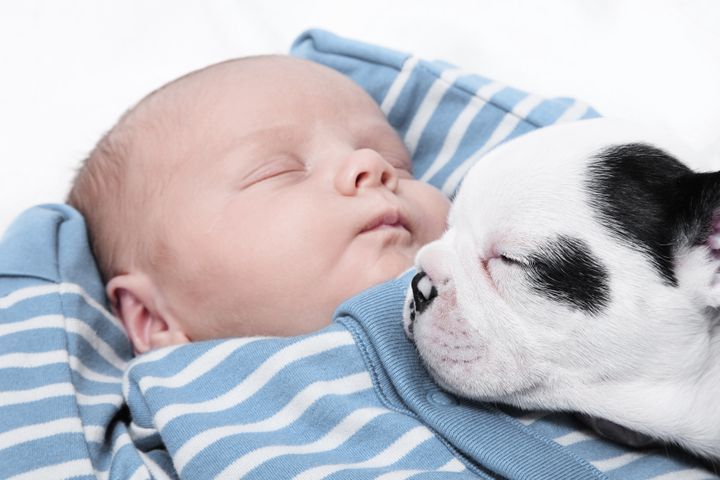
Hives (Urticaria)
If swollen, itchy welts suddenly appear on your baby’s skin, it’s likely to be hives (urticaria). While the skin ailment can take any shape or size, typically, hives arewell-defined with a paler central bit and red border.
Hives happen when the body releases too much histamine, and can be the result of insect bites, a food reaction, a pet allergy, extreme cold or hot weather, antibiotics or a virus or cold that your child is suffering from.
Acute urticaria - which clears in about six weeks - is thought to affect one in five people at some point in their lives, according to the NHS, making it an extremely common condition. If you suspect your baby has hives, double check with your GP.
*Claim – study conducted on adults with dry, itchy skin
Oilatum Cream, Oilatum Junior Bath Additive (light liquid paraffin) and Oilatum Junior Cream are medicines for eczema and related dry skin conditions. Always read the label.